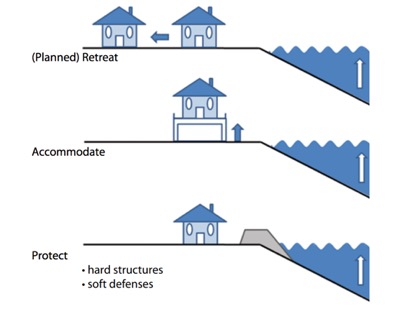
We can mitigate climate change and adapt to it at the same time
On Black Friday, the world was handed another inch-thick report detailing how climate change will pull us into the red. The Fourth National Climate Assessment, released by the Trump Administration, spelled out in stark terms how climate change will affect everything from America’s infrastructure to its national security, and how it will have to adapt. The public discussion sometimes glosses over climate adaptation, but reducing emissions and bracing for what’s to come are not mutually exclusive goals. We can—and should—address both.
Stemming the tide
This year has offered the world another glimpse at the future costs of climate change. As the Trump Administration spells out, it remains to be seen how much we do to slow it down (mitigation) and how well we adjust to whatever the new normal is (adaptation).
Mitigation is an umbrella term for any steps taken to reduce emissions. It includes switching to lower-carbon products (e.g. buying an electric vehicle, switching from coal to renewable power), using fewer high-carbon products (e.g. eating less meat, using public transit), and using high-carbon products more efficiently (e.g. installing a smart thermostat, not idling your car).
Nearly every country in the world has pledged to reduce their greenhouse gas (GHG) emissions under the Paris Agreement. Doing so will slow the accumulation of GHGs in the atmosphere, which will in turn slow the rate at which the Earth warms. The more GHGs we emit, the warmer it will get, and the less predictable the effects will become.
For our part, Canadians agree that we should mitigate. The question now is how best to do so. Here at Ecofiscal, we’ve laid out an approach to reducing emissions at lowest possible cost: a well-designed, universal, rising price on carbon, and a handful of complementary policies around the edges. Unlike other policy approaches, carbon pricing essentially lets everyone find the cheapest options available to them to reduce their emissions.
Keeping our heads above water
Adaptation is trickier. Adapting to sea level rise is different than adapting to pervasive drought, which is different than adapting to the increased risk of forest fires, which is different than adapting to freak storms, which is different than adapting to urban heatwaves. Unlike mitigation, it also demands significant effort at the municipal level, from data collection to urban planning.
And because the impacts of climate vary so vastly, there is also no single, elegant policy that we can rely on for the heavy lifting. Whereas a dollar spent on mitigation benefits everyone more or less equally, one dollar spent on adaptation may not. Hard discussions over fairness are inevitable.
What does adaptation actually look like? It depends on the sector. It can mean anything from “hardening” our electricity grid, developing innovative insurance programs, reducing flood risk in cities, or figuring out how to help coastal communities adjust to see level rise (see below). Not all of the solutions are marked-based (we’re fans of those) but some are.
Going coastal: Three approaches to sea-level rise
Source: The Oceanographic Society
All of these examples, you’ll notice, have little to do with mitigation. But they certainly belong in a broader, more comprehensive discussion about climate change.
Different objectives, different policies
As John Holdren once famously said: “We basically have three choices: mitigation, adaptation and suffering. We’re going to do some of each. The question is what the mix is going to be.” But it’s important to remember that while mitigation and adaptation are not substitutes, policy will help us do both of them better.
And we can pursue both simultaneously. It can be helpful to partition those conversations, but we should keep in mind that they’re combatting the same problem—just from different angles. The Trump Administration’s report illustrates the relative complexity of each problem from a policy perspective: one chapter for mitigation, 12 for adaptation.
Here at Ecofiscal, you could say we’ve taken the easier job. Our role is to show how to use one good idea—pricing—to reduce different environmental bads. Adaptation is exponentially more complicated; it’s not our wheelhouse, but we acknowledge its importance and its difficulty. And the sooner we get a handle on mitigation, the more time and energy we’ll have for adaptation.
Some of the damages we will experience from climate change are already locked in. As the National Climate Assessment shows, we can expect adaptation to grow in importance over time. That doesn’t mean that we should throw in the towel on mitigation. Mitigation gets more public attention. That doesn’t mean we should ignore adaptation. To avoid the worst of climate change, we’ll need both.




1 comment
On Adaptation: To many, the ocean front may be far. When I look at a graph showing world GHG emissions over time, and where it must go to meet 1.5C or 2C by 2100, I see a precipitous drop. Like a cliff. A massive change / shift. That’s the main adaptation story I see unfolding in the next few decades that affects everyone.
Comments are closed.